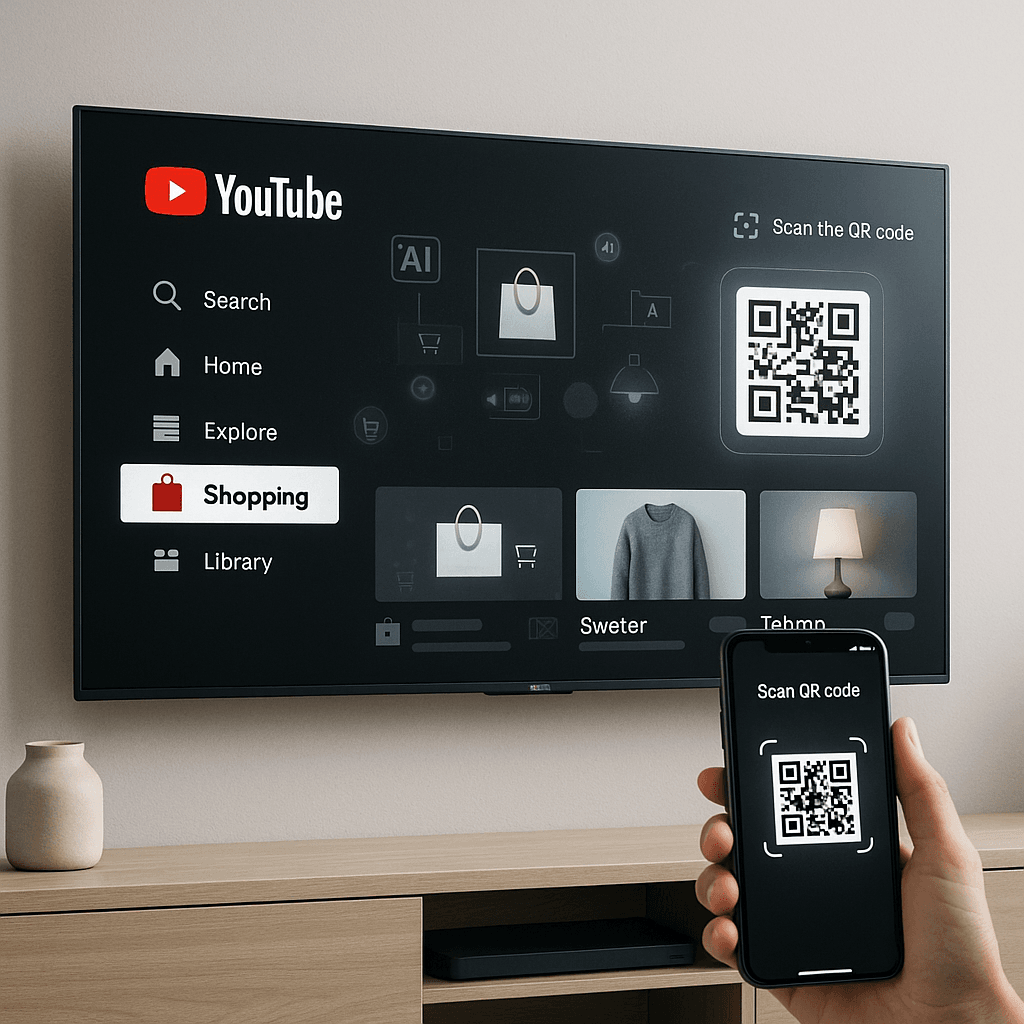YouTube just made its biggest play yet for the living room with a suite of TV app updates that bridge the gap between watching and buying. The platform rolled out QR code shopping integration and AI-powered video upscaling as it fights to solidify its dominance over traditional media giants like Disney and Netflix in the streaming wars.
YouTube is betting big on turning your TV into a shopping mall. The Google-owned platform just unveiled a collection of updates designed to make its TV app the go-to destination for both entertainment and commerce, announcing QR code shopping integration and AI-powered video upscaling that could reshape how we think about living room streaming.
The timing isn't coincidental. YouTube commands 12.4% of total TV viewing time, according to Nielsen data from April, beating heavyweight media platforms like Disney, Paramount, and Netflix. Now it wants to monetize that dominance.
The star feature lets creators embed QR codes directly into their videos, allowing viewers to scan products with their phones and jump straight to purchase pages. It's not exactly revolutionary - Roku, Peacock, and others have tried similar approaches. But YouTube's implementation targets creator revenue directly, linking to their online stores rather than generic product pages.
The numbers behind this push are staggering. Shopping-related content alone generated 35 billion viewing hours over the past year, while channels earning six figures or more from TV screens jumped 45% year-over-year. "This feature aims to boost revenue, particularly for shopping-related content," YouTube stated in its announcement, making clear this isn't just about user experience - it's about creator economics.
But the shopping integration is just one piece of YouTube's TV strategy. The platform is also rolling out AI-powered upscaling technology that automatically converts videos uploaded at lower resolutions to full HD, with 4K support planned for the future. Creators keep control over their original files, and viewers can still choose the source resolution if they prefer.
This puts YouTube in direct competition with Netflix's own AI upscaling efforts, though Netflix's track record here raises questions about execution. The streaming giant faced criticism for its AI upscaling of older shows like "A Different World," where the technology produced distorted faces and generally poor results, according to The Verge.











